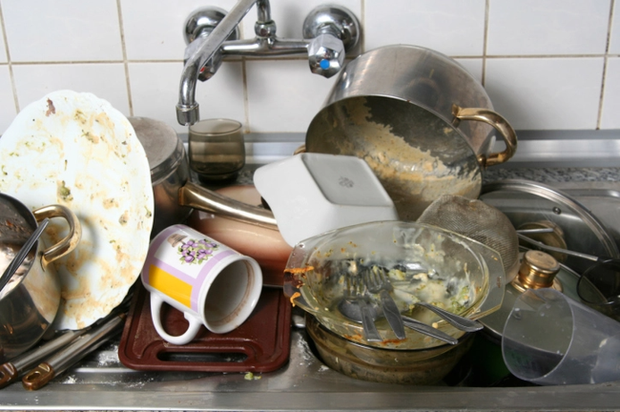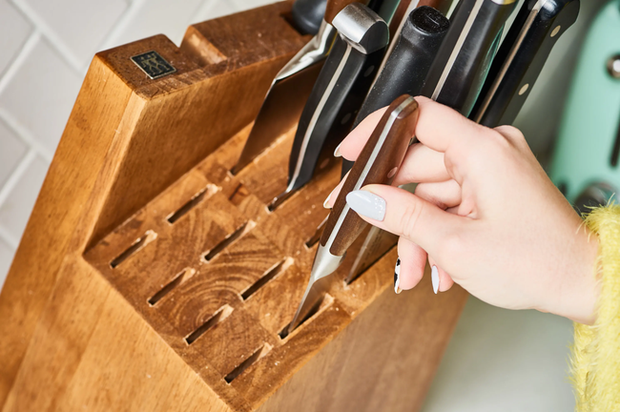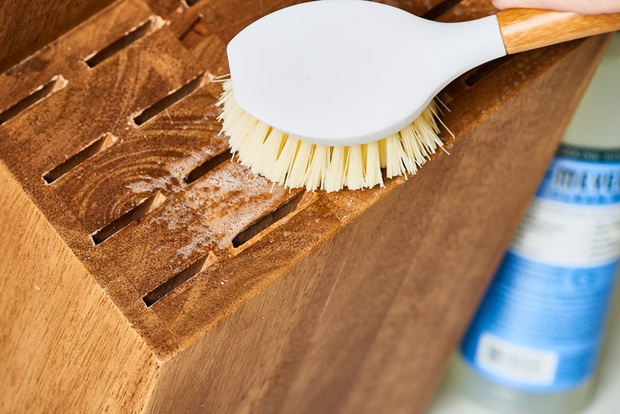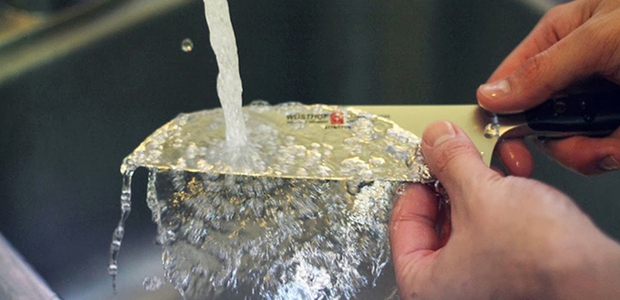Diseases and cancer cells often “dwell” in a familiar object in the kitchen, seemingly harmless but as dirty as a toilet.
In any home, the kitchen plays a very important role. The kitchen is the symbol of the home and the cohesion of the whole family. Therefore, this place is always a place where many housewives spend most of their time and dedication to cook the best quality meals, helping the whole family to improve their health.
However, in the kitchen, there are always dirty objects, affecting the processing process even though we have followed the rules of food hygiene and safety. One of them is the knife box, which is rarely cleaned often, so it often clings to countless bacteria. If left unhygienic for a long time, it will become the dirtiest item in the kitchen.

The kitchen is home to many harmful bacteria if not cleaned properly
Knife box – clean but dirty like a toilet
We often use knives to cut many different foods, making them susceptible to bacteria. If you haven’t cleaned the knife clean yet, but put it back in the knife case, this item will accumulate hundreds of thousands of bacteria and multiply quickly. Thereby causing bacteria to adhere to the knife, each time it is cut, it will infect the food and directly affect the health of the family.
Besides, knife boxes often have many compartments and are quite deep, making cleaning difficult. Not to mention they are also prone to stagnation of water and accumulation of dirt, plus the humid and dark environment in the kitchen… making the knife case terribly dirty. If you do not clean for a long time, there are more bacteria than a toilet.

The knife box is extremely dirty but many people still don’t know it
According to Consumer Reports – a non-profit consumer organization in the US, wooden knife cases are also a breeding ground for many dangerous diseases. When used for a long time, the box will be cracked, allowing bacteria to enter, if it is wet, it will also form mold and aflatoxin, a level 1 carcinogen warned by WHO.
How to clean the knife holder?
Many people often subjectively do not clean the knife box because they do not see it as dirty. But in fact, this item contains more bacteria than you think. According to Allan Rathey – Director of the American Institute of Facilities (HFI), you need to clean the knife case once a week if used regularly.
The specific cleaning procedure is as follows: Remove all knives and then wash the box with soap and hot water, scrub the knife slots with a brush or kitchen cleaner. After it is clean and no longer greasy, wash the box with water one last time, then dry it, turn it upside down and dry in a cool place.

You need to clean the knife holder regularly to prevent bacteria from accumulating
Almost all items have an expiration date, the longer they are used, the easier it is to affect health. If you find that the knife box shows signs of cracking, black mold, etc., you should replace it with a new one to ensure safety.
How to clean cutlery to avoid infection
In general, what makes knife cases most susceptible to infection is not cleaning the knives properly. Knives are tools that need to be used every day in the kitchen, so cleaning and maintenance is a must to prolong their shelf life, as well as protect the health of the whole family.
It will be difficult for you to clean the knife if the stain stays on the blade for too long. So please wash it immediately after use, remember to dry it with a towel to avoid rust. For stubborn stains, soak the knife in water for about 1-2 minutes and then wipe it with dishwashing liquid. Do not soak for too long as it will damage the knife.

The knife should be cleaned after use to avoid bacteria growth
In addition, buy separate knife cases to avoid putting knives together with other tools, helping knives to avoid wear due to collisions. In addition, use different knives to serve your own needs. For example, the knife cuts fruit separately and cuts meat and fish separately… so that the food is not cross-contaminated.
According to Insider, Tasteofhome
at Blogtuan.info – Source: cafebiz.vn – Read the original article here



